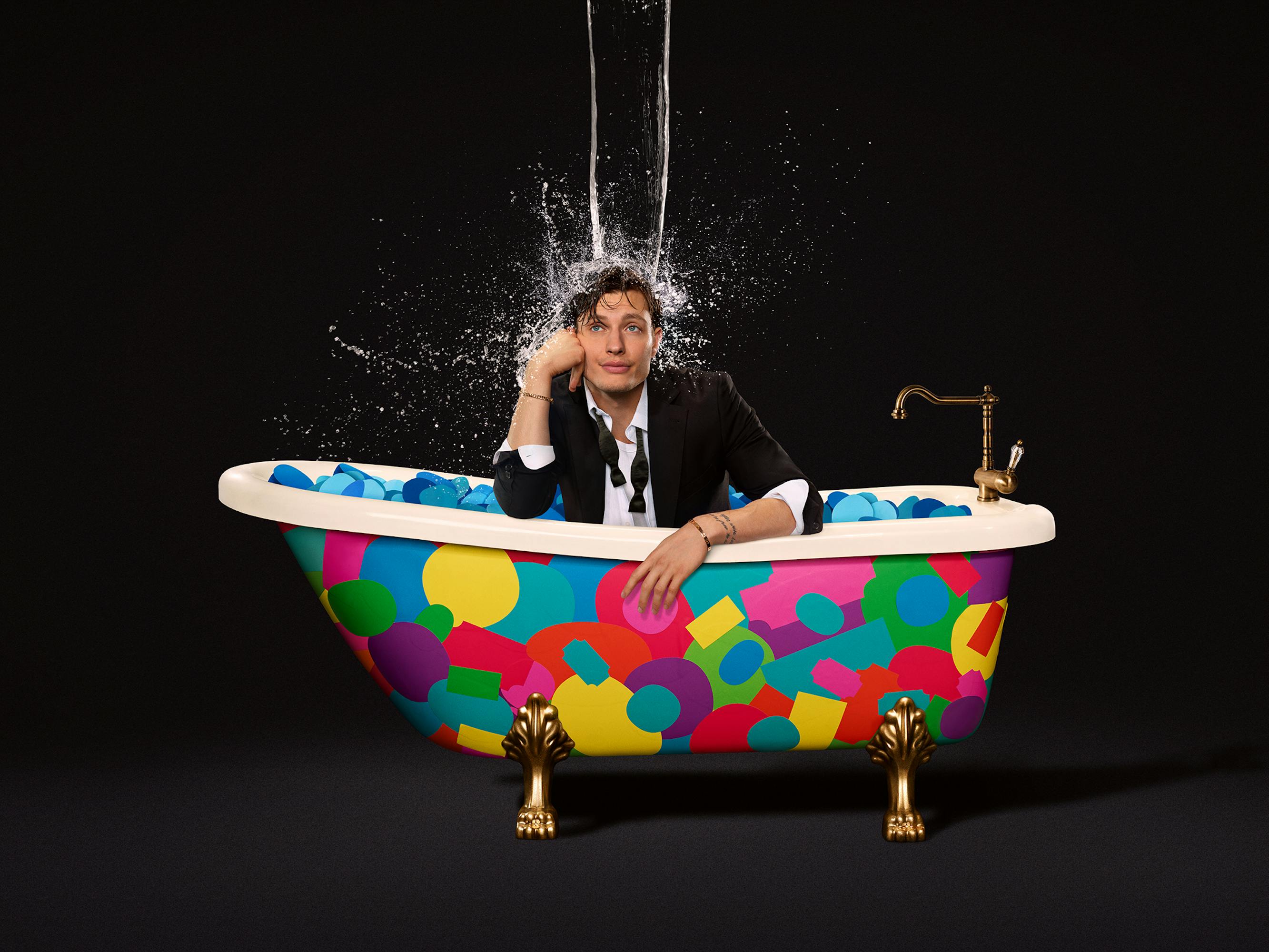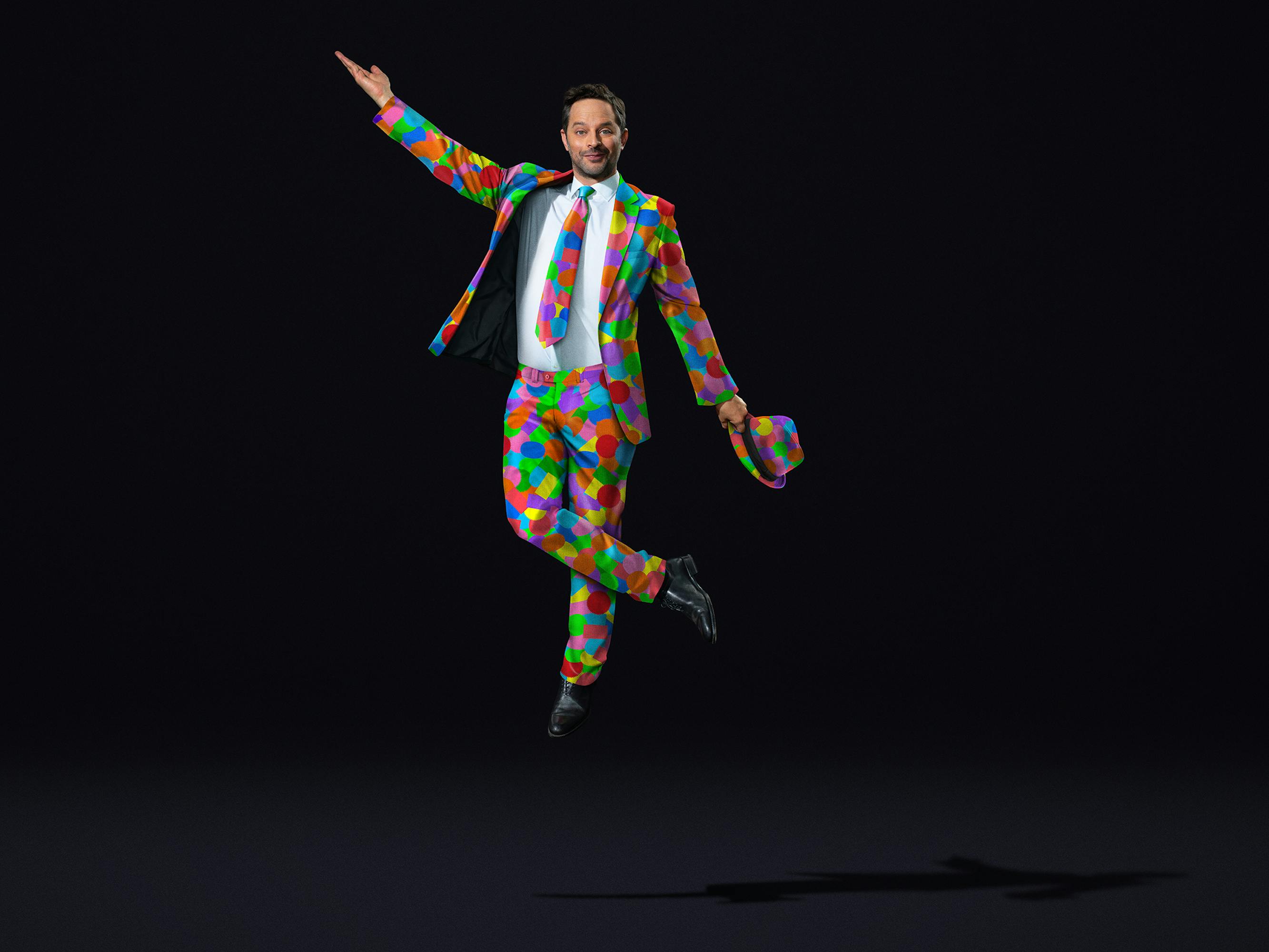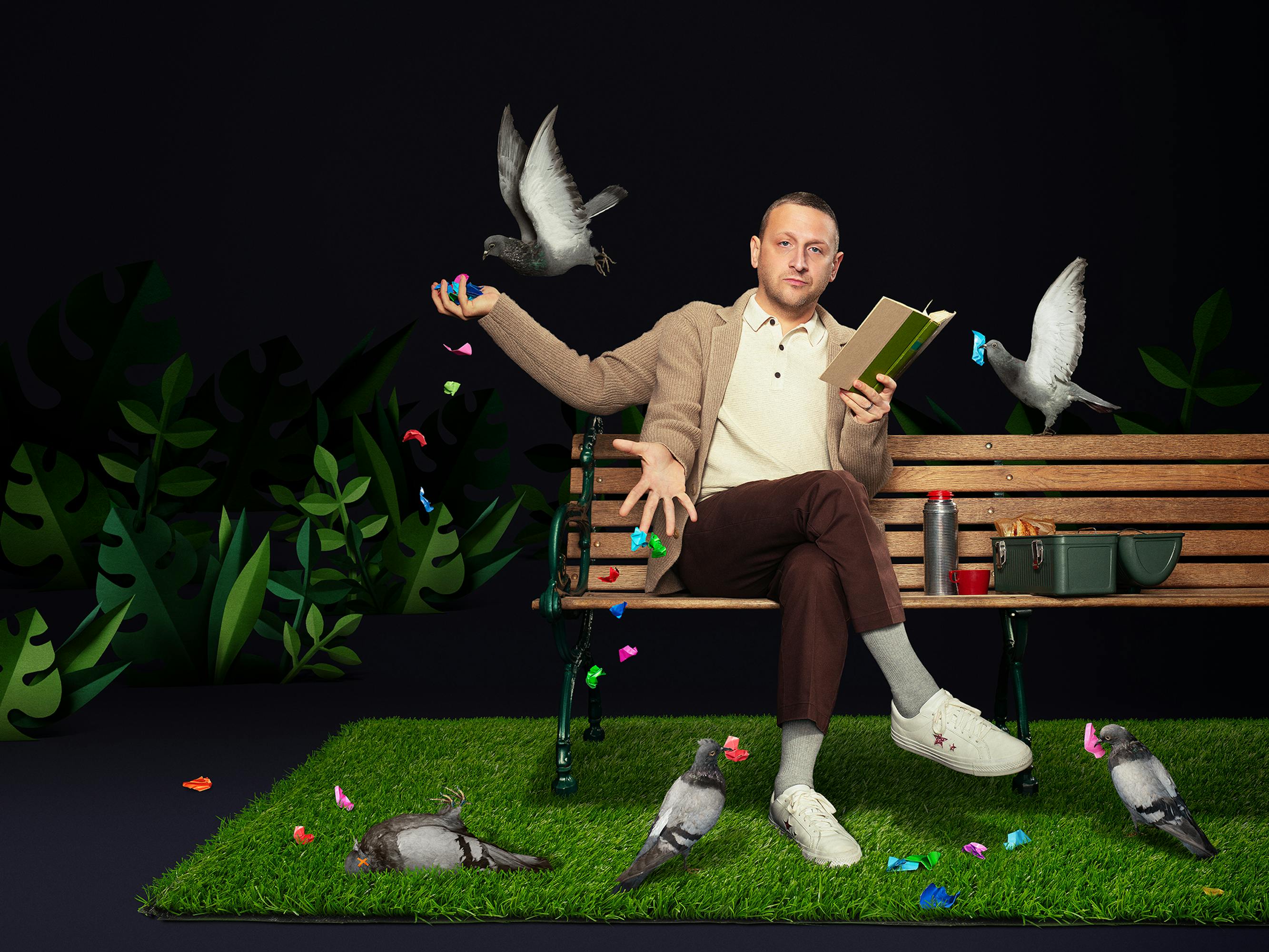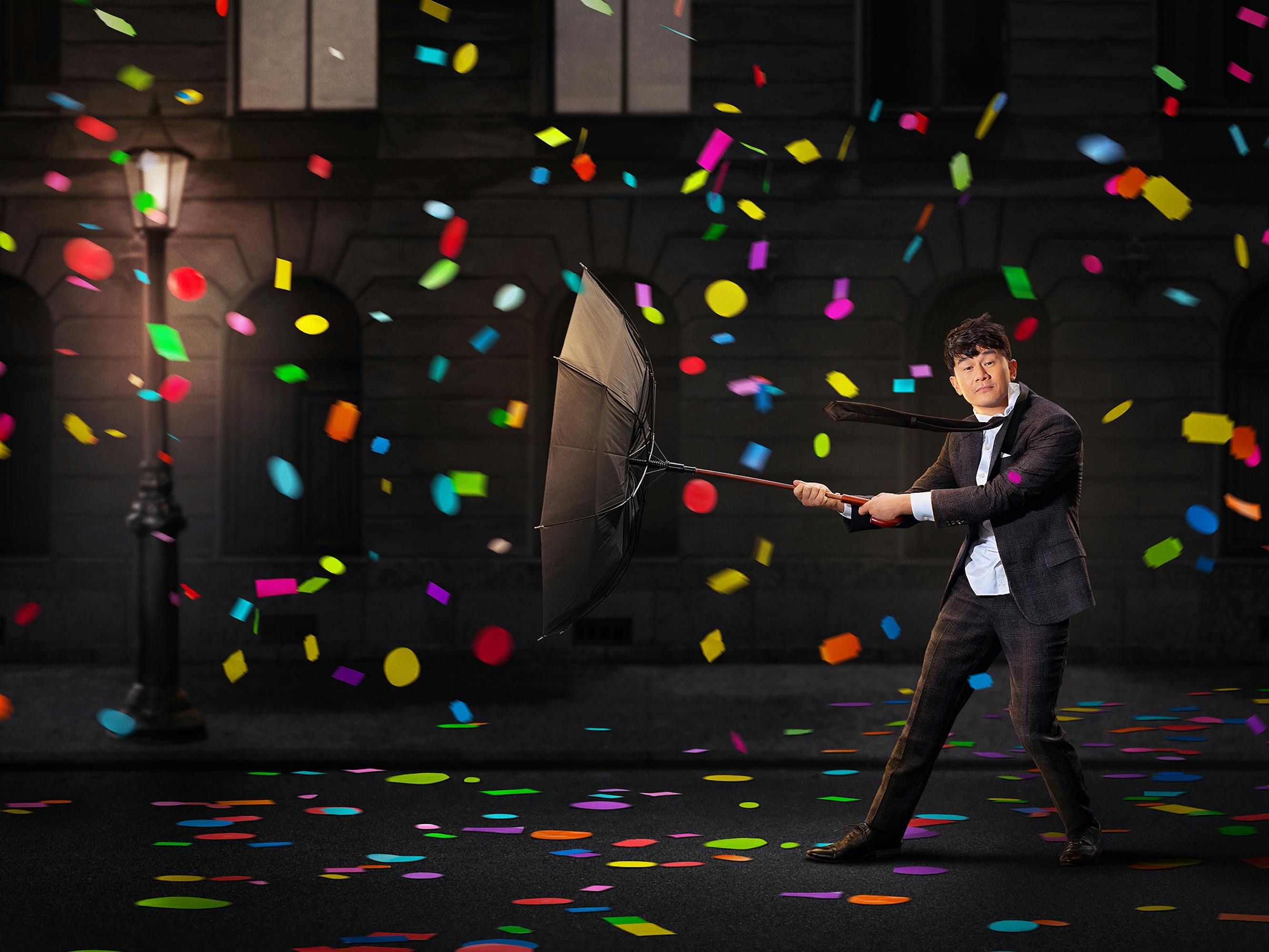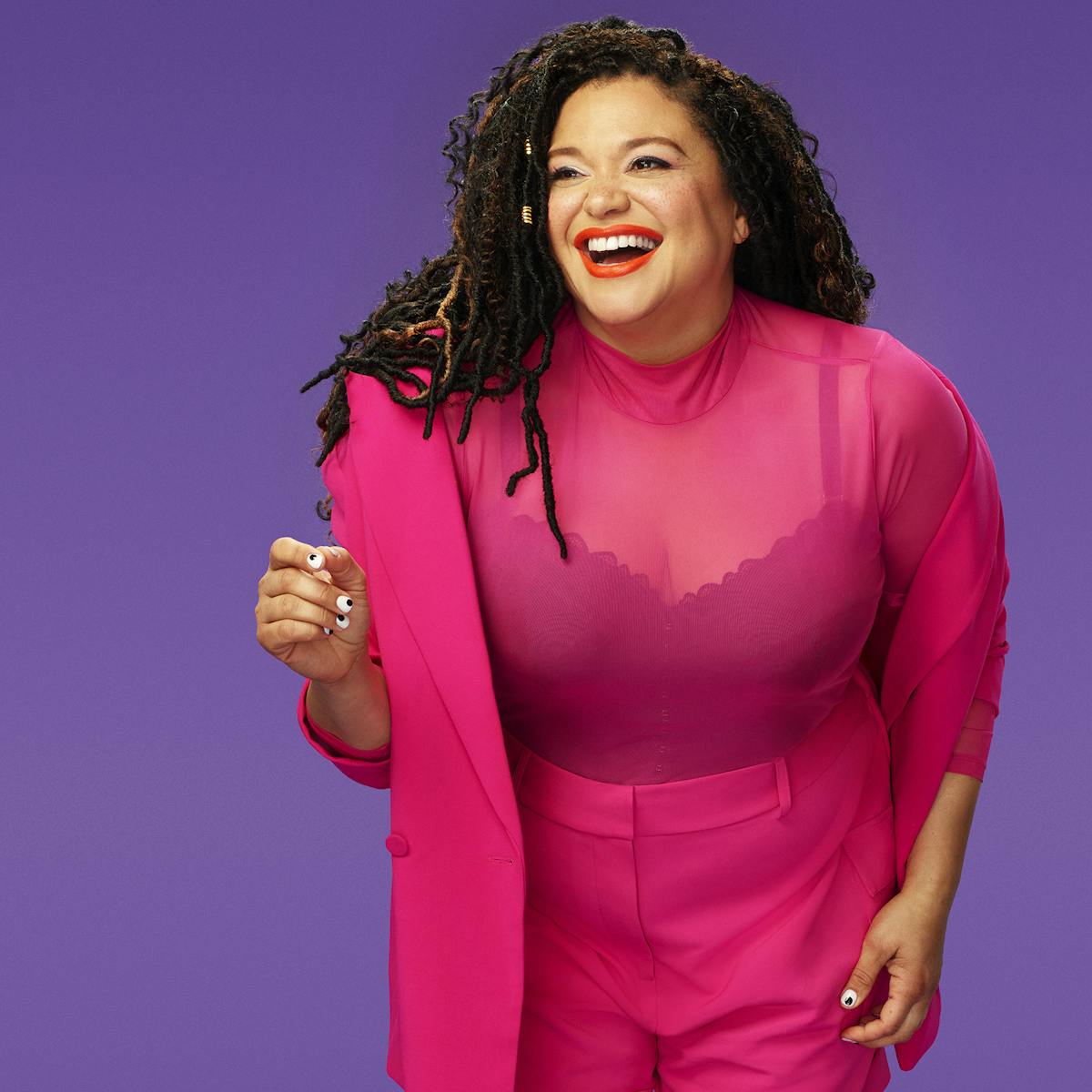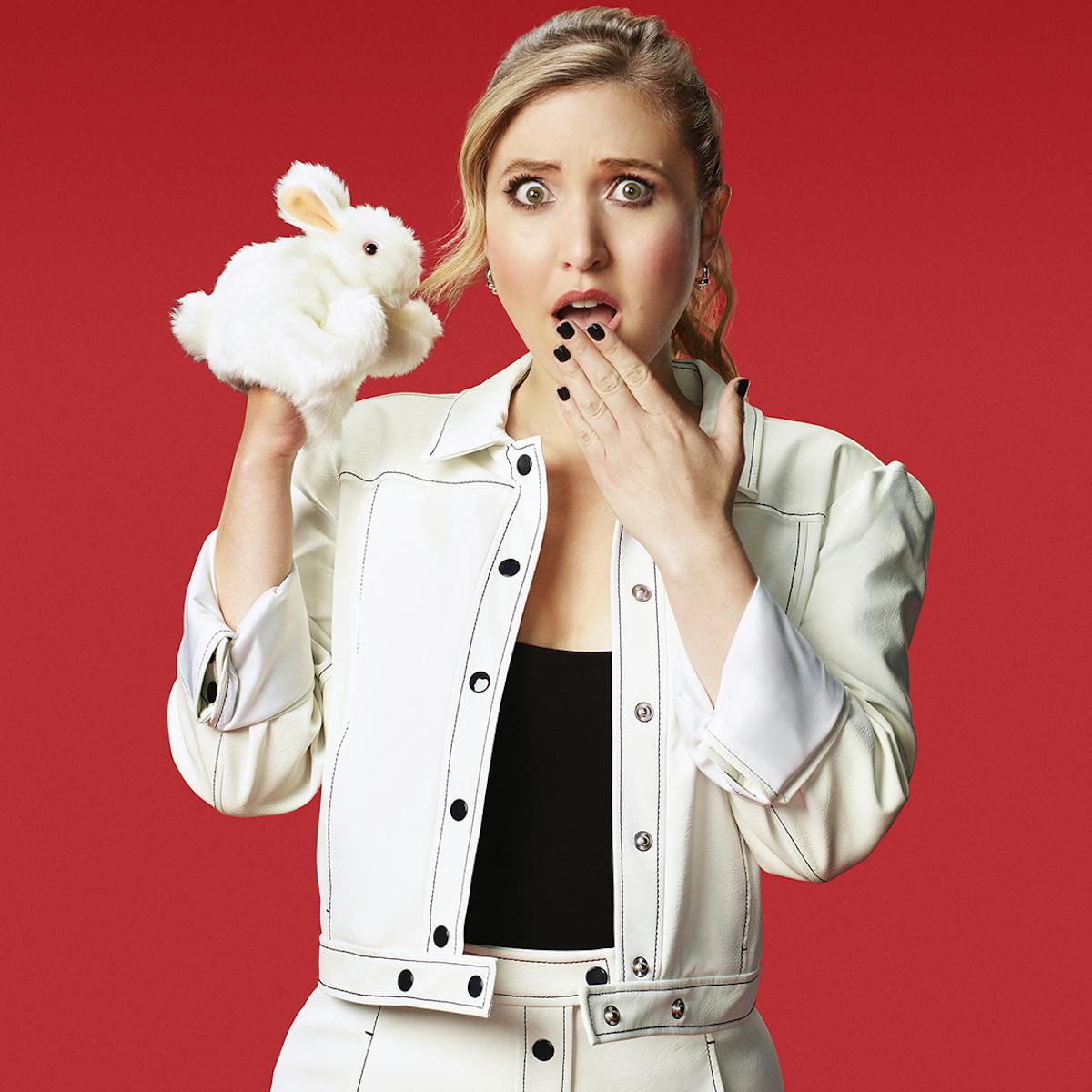The SNL photographer teams up with Netflix is a Joke to create the 2024 festival campaign, delving into the process with her longtime collaborator, Pentagram’s Emily Oberman.
“The joy business” is how Mary Ellen Matthews, who has photographed every single Saturday Night Live host for the past 25 years, describes her work. Since 1999, Matthews has served as the legendary late-night show’s official photographer, capturing some of the biggest faces in the zeitgeist — all with a singular aesthetic throughline and at SNL’s breakneck pace. “There’s so much working against you to get them all done in such a short amount of time, make them different, and show each guest host and musical guest in their greatest light,” Matthews explains. “For me, it’s always about joy, getting that to speak the loudest, to get that person to feel that that’s what they’re communicating through an idea or a setup.”
With 25 years of working with the funniest people around — and having shot Netflix is a Joke’s first-ever campaign back in 2017 — Matthews was the perfect choice to photograph this year’s comedians, dynamic work which is featured in the special section of Queue Issue 16. Spanning 500-plus shows, 400-plus artists, 35-plus venues, and 12 days, Netflix is a Joke Fest is a peerless assemblage of the biggest stand-up comedians across the world. “If there’s one person who is the definitive expert on combining absurdity and humor with stunning portraiture, it’s undeniably Mary Ellen Matthews,” says Director of U.S. Comedy Marketing Evan Cuttic. “We knew Mary Ellen would understand what we were trying to do, and that artists would be more likely to step outside of their comfort zones and into our weird world knowing that she was behind the lens.”
Matthews and the Netflix creative team collaborated over three months of nonstop emails, FaceTimes, and middle-of-the-night texts “with random scrap images or things like ‘giant bird?’” says Cuttic of their open and thorough preparation for the Netflix is a Joke shoot, which took place over nine days in three cities and included 24 artists and 36 concepts. “This project was definitely the opposite of one-size-fits-all and the effort to customize concepts to each artist paid off,” says Senior Manager of Comedy Marketing Phil Kropoth. “An environment where all ideas are welcome but none are precious is usually one that produces great creative, and that’s exactly what this was. That allowed us time to play in the sandbox more than usual, and it’s the reason why we so often wrapped a shoot knowing we captured something better than we could have imagined.”
Matthews’s resulting work sparkles with stylish humor and humanity, which makes all the more sense considering her personal ties to Netflix and Queue. Matthews has worked with one of Queue’s design directors, Pentagram’s Emily Oberman, on the SNL opening title sequence for almost 30 years. And the creative symbiosis doesn’t end there: Ryan G. Smith, former Pentagram employee and current Queue manager, sits down with Matthews and Oberman to discuss the remarkable Netflix is a Joke campaign, and the designers’ decades-long friendship and collaboration. “Our creative minds have aligned perfectly,” Matthews says of their kismet, “and we’ve just been having just a fantastic time.”
An edited version of the conversation follows.
Isn’t that just amazing that we get to do this?
Mary Ellen Matthews
Ryan G. Smith: You have this very long legacy together with SNL, but then this amazing happenstance collaboration now with the Netflix is a Joke campaign and Queue.
Emily Oberman: I heard that Netflix is a Joke was going to be the special section of the next issue, and when they told us that you were going to be the photographer, I did a little inner jump for joy. I just knew there was no one else who could capture the spirit of this whole section as perfectly. I knew immediately that it would have a flow, a vision, photographically. You would be able to treat the artists right, have them be at their best and their most comfortable. You have a sense of humor that aligns with this and a humanity that would just bring the whole section together in a smart, beautiful, elegant way. I knew that it would be the same for the campaign outside of the magazine. It was very exciting to me, as a designer and a creative director, separate from as your friend and fan.
Mary Ellen Matthews: It feels like a good match. It’s so nice to have such a great working relationship because we’re friends. And we became friends because of our working relationship. So it’s like this total symbiotic perfection.
Mary Ellen, how did you get into photography and portraiture, and your area of specialty of documenting comedians?
MEM: I grew up with a darkroom in the basement — I suppose the chemicals seeped into my chemistry. My father was always putting a camera in my hand and he had a beautiful Rolleiflex, which I have now, and he used to give me and my brother and sisters a little photography competition, and we would develop all the prints in the basement with him. I loved all the books that we had, and I couldn’t believe where you could travel and the stories you could tell by looking at these books.
I went to study media technology, so I covered everything, and then I started working for a record company and I was taking all the photos of all the bands. Then I started working for [former Head Photographer] Edie Baskin at SNL. I was her assistant, and she became a mentor to me, and I got to learn really quickly how to handle a lot of stuff fast and dirty, but not really that dirty. I learned to do it in a way that it’s on the spot, and there are a lot of other things going on at the same time, with a really tight deadline that you can’t change. You can’t say, “Can I just have 10 more minutes?”
Emily, I’d love to hear about your entrance into graphic design, creative direction, motion design, and all the many worlds in which you play.
EO: My father was a graphic designer, my mother was a painter and a sculptor. So I came from a very similar world where graphic design and art were always part of my upbringing. My parents subscribed to design magazines, type books, advertising, art books, and Avant Garde and Graphis were always in my house. I would go into the city and spend time at my father’s desk at his studio playing with magic markers. My parents would design children’s books together, and they would always let me do little parts of the illustration with them, and I would get paid for doing it. So commercial art was always part of my upbringing. I feel like I went into the family business, and most people I know who are in our kinds of fields had a much bigger journey to get to being an artist or a creative person. It’s funny that we both have that same thing. If we had rebelled, we’d be doctors or accountants.
And then I went to Cooper Union. I also took a little sidebar and studied acting with Stella Adler, but I discovered quickly that I didn’t really want to be an actress, even though I’m really hammy. But that’s how I got into motion: I went back to art school and started doing film. And that felt like the theatrical side of design, moving typography. So then I started working at [design firm] M&Co. and became the person who did most of the motion work there. When I started [design studio] Number Seventeen with Bonnie [Siegler], we started working for [segment producer] James Signorelli at SNL, and that’s how I met Mary Ellen so long ago, 28 years ago. We started doing commercial parodies and then started working on the title [sequences]. When I went to Pentagram, at a certain point, Mary Ellen and I started working really closely together on the title design and the creative direction of the titles themselves.
What have been some of the greatest challenges and some of the greatest triumphs that you’ve experienced and shared in your work with SNL over the years?
MEM: We look to outdo ourselves every week. This last one at the Chelsea Hotel is by far my absolute favorite of anything we’ve ever done, and it was really difficult. Usually we’re running all over the city, and it just was a different approach to do it in one place. It also backed into the Chelsea Hotel coming back; they were reopening and we were reopening. So it was like, Okay, these two institutions are meeting. It just was perfect. We had almost 20 cast members and a couple nights to get all the graphics and the look of it . . . but it’s the best thing ever. Last year, I was like, “I’m never doing this again,” [and now] I’m like, “When are we doing it again?” Isn’t that just amazing that we get to do this?
EO: Every time, you think, Oh, god, what are we going to do? Then you come up with a new idea. And it’s kind of cool because the brief is always the same: the city that you love, the cast you wish you were with, the party you wish you were at. And [SNL creator] Lorne [Michaels] always wants it to feel new and different, but also the same.
I like to say that there’s always a little bit of a backstory: There was the COVID year, where it had to feel like everything was going to be safe, that SNL was coming back to show the world that everything was going to be okay, and so we had to figure out a way to tell that story. It was just surreal because nobody else was out in the world. Then this past year, Mary Ellen was like, “It’d be so great if we did this in one place,” and we found these amazing photographs of the Chelsea Hotel from the past and used those as our inspiration.
When they told us that you were going to be the photographer, I did a little inner jump for joy. I just knew there was no one else who could capture the spirit of this whole section as perfectly.
Emily Oberman
There was one thing that you said about capturing each of the hosts of SNL in their greatest light. How did you approach the Netflix is a Joke campaign — 24, 25 [people], nine shoot days, multiple cities — in that way?
MEM: I would say, first of all, it’s the Netflix team I’m working with. We all had 1,000 Zooms discussing concepts, rolling them over, assigning them to each person, and making the right decisions in that way. I’d worked with at least half [of the comedians] before, so that was a little bit of an advantage and a comfortability level for both of us, I’d say. I love what I do and I love that I can bring the viewer along for this ride. What a wild thing to be able to do what we do. I feel so grateful for that.
It’s always unfair to ask you to pick your favorite baby, but was there a favorite concept?
MEM: Honestly, no, I couldn’t say. Right now, it’s just all a blur. It’s sort of like going back through the yearbook like, “Oh, I remember that guy. I forgot about that guy.”
Every shoot was just as spectacular and delightful as the one after it, starting with, again, the Netflix team — Evan, Phil, and [producers] Jessica [Zerby] and Russel [Sher], and all those guys — and then my propping guys, some set designer guys, Shawn Patrick and [Dan] Looms, and it just was an amazing team. It couldn’t have been any better, honestly.
Emily, what was it like to work with Mary Ellen’s amazing photography in a completely new context?
EO: Comforting is not the right word, but I felt like everything was going to be okay because I knew that the section would hold together really well. I think the magazine works best when you can feel a throughline. I just knew that this was going to be just a home run, no matter what. Even before we got the photographs, we were working with swipe images from your body of work.
MEM: When you do big projects like this, you learn a thing or two each time you go, which is such a cool way to see a project through. It just keeps getting better and better and better. And that’s the same thing working with SNL. It’s like you just get a chance to start all over again. You can plan for something, but then something else just decides to enter the chat. It’s the beginning of the book, tabula rasa, blank slate.
EO: It’s true of a magazine: Every time you do a magazine again, you’re starting over.
I’ll hand it over to the two of you. Mary Ellen, a question for Emily, and Emily, a question for Mary Ellen?
MEM: It just seems like Emily’s one of the busiest people I’ve ever met and has such a huge presence in the design world. How many projects do you work on at once?
EO: Right now, we’re probably working on 20 projects. I do have a very, very, very talented team.
MEM: Anytime I mention you to anybody who’s in the know, they’re like, “You know Emily Oberman? She’s the lady. The design lady.”
EO: And anytime I mention you, people are like, “What? You know her?” It’s about doing great work with great people for great people.
MEM: It’s a joy. The joy business.



